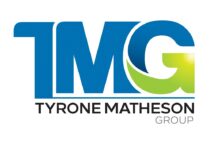
In today’s fiercely competitive business landscape, gaining a strategic advantage is more than having a great product or service Mastering Operational Processes. It’s about how efficiently and effectively you execute your operations. Unlocking the power of processes can be the critical differentiator between thriving and merely surviving in your industry. Join us as we delve into operational mastery and discover how strategic advantage lies in the meticulous optimization of your organizational workflows.
Harnessing processes for strategic success involves understanding their role within your organization’s broader objectives. By implementing agile methodologies and continuously evaluating and refining your processes, you can adapt to changing market dynamics and stay ahead of the competition. Moreover, optimizing processes for a competitive edge requires aligning them closely with your organizational goals. This ensures that every aspect of your operations contributes to your overall strategy, maximizing efficiency and driving success. Through strategic planning and careful execution, you can unlock the full potential of your processes and position your business for long-term growth and profitability.
Introduction:
In a world where businesses are constantly vying for market dominance, the ability to harness processes for strategic success has become paramount Mastering Operational Processes. But what does it indeed mean to master operational processes? How can businesses optimize their workflows to gain a competitive edge? Let’s explore these questions as we uncover the secrets to achieving strategic advantage through operational excellence.
By delving deep into the intricacies of operational workflows, businesses can uncover hidden inefficiencies and areas for improvement. This requires a holistic approach that encompasses everything from the initial stages of production to the final delivery of goods or services. Moreover, mastering operational processes involves more than just increasing efficiency; it’s also about ensuring that every aspect of the workflow is aligned with the organization’s broader strategic goals.
To gain a strategic advantage through operational excellence, businesses must first identify their core competencies and areas of expertise. This requires a thorough understanding of the market landscape and the competitive forces at play. Once these areas have been identified, businesses can optimize their processes to capitalize on their strengths and differentiate themselves from the competition. Additionally, achieving strategic advantage through operational excellence requires continuous improvement. This means constantly monitoring and evaluating performance metrics, identifying areas for further optimization, and implementing changes to drive ongoing success. By adopting a proactive approach to operational excellence, businesses can position themselves for long-term success in today’s dynamic marketplace.
Harnessing Processes for Strategic Success:
Harnessing processes for strategic success requires deeply comprehending their significance within business operations. By discerning critical areas for enhancement and integrating agile methodologies, organizations can streamline their workflows to align with market fluctuations. However, pursuing strategic advantage transcends mere efficiency; it also necessitates effectiveness. Through automation, businesses can liberate precious time and resources, focusing on fostering innovation and facilitating sustainable growth.
Mastering operational processes is paramount for securing a strategic edge in today’s competitive landscape. Understanding the pivotal role of processes and optimizing them for efficiency is the cornerstone of success. By embracing agile methodologies and leveraging automation, businesses can adapt to market dynamics and carve out a niche for innovation and advancement.
Optimizing Processes for Competitive Edge:
Aligning processes with organizational goals is a fundamental step toward achieving strategic advantage in today’s competitive business environment. When workflows are synchronized with overarching objectives, businesses can operate more cohesively and efficiently. Moreover, fostering a culture of continuous improvement ensures that processes remain adaptable and responsive to changing market conditions. Organizations can maintain their competitive edge and drive sustainable growth by regularly reassessing and refining procedures.
Establishing key performance indicators (KPIs) further enhances the alignment of processes with organizational goals. These metrics provide clear benchmarks for success and enable businesses to track their progress toward strategic objectives. However, more than collecting data alone is required; it must be effectively analyzed and leveraged for informed decision-making. Businesses can gain valuable insights into market trends and customer behavior using data analytics tools. Armed with this information, they can proactively adjust their strategies, positioning themselves ahead of the competition.
Leveraging Strategy Through Effective Processes:

Synergy through cross-department collaboration is another critical component of gaining a strategic advantage. By breaking down silos and encouraging communication between teams, businesses can harness the collective expertise of their employees to drive innovation and growth. But it’s not just about collaboration – it’s also about empowerment. By investing in employee development, businesses can ensure their teams have the skills and knowledge needed to succeed.
Cross-department collaboration fosters a dynamic exchange of ideas and perspectives, leading to innovative solutions and improved problem-solving capabilities. When employees from different departments come together to work towards a common goal, they bring unique insights and expertise to the table, resulting in more effective strategies and outcomes. Moreover, investing in employee development demonstrates a commitment to individual growth and advancement, which can boost morale and motivation within the workforce. As employees acquire new skills and knowledge, they become better equipped to tackle challenges and contribute to the organization’s success.
Strategic Advantage: Mastering Operational Processes:
At the heart of strategic advantage lies the mastery of operational processes. By continuously striving for improvement and embracing change, businesses can stay ahead of the curve and outpace the competition. But it’s not just about mastering processes – it’s also about harnessing them to achieve strategic goals. By aligning workflows with organizational objectives and leveraging data-driven decisions, businesses can position themselves for long-term success in today’s dynamic marketplace.
To achieve this mastery, businesses must adopt a proactive approach to process optimization. This involves regularly evaluating existing workflows, identifying areas for improvement, and implementing changes to enhance efficiency and effectiveness. Moreover, businesses must be willing to embrace change and adapt their processes to meet the evolving needs of their customers and the marketplace. By fostering a continuous improvement and innovation culture, organizations can ensure that they are always one step ahead of the competition.
Maximizing Strategy via Streamlined Processes:
Establishing a continuous improvement culture is a cornerstone for organizations aiming to maximize their strategies through streamlined processes. By fostering an environment that encourages innovation and creativity, businesses create fertile ground for adapting to evolving customer needs and preferences. However, more than innovation is required.
Efficiency is equally paramount. Businesses can optimize their operations and boost productivity by identifying and eliminating waste within workflows. Yet, productivity is just one aspect. Sustainability is also crucial. By prioritizing environmental and social responsibility in their processes, businesses reduce their ecological footprint and build trust and loyalty with customers and stakeholders, establishing a solid foundation for long-term success and growth.
Empowering Strategy with Efficient Processes:
In conclusion, gaining a strategic advantage necessitates a holistic approach to operational excellence. Businesses must recognize the importance of processes and leverage them strategically to attain long-term success in today’s fiercely competitive marketplace. It’s imperative to understand that success isn’t solely about achieving short-term goals; it’s also about ensuring sustainability and resilience in the face of evolving challenges. By embracing change and investing in continuous improvement, organizations can fortify themselves against uncertainty and remain agile in responding to market dynamics. Therefore, mastering operational processes isn’t just a means to an end—it’s a pathway to unlocking enduring strategic advantage.
Are you prepared to master operational processes and unlock your business’s strategic advantage? It’s time to recognize the pivotal role of streamlined workflows in driving organizational success. By embracing a culture of continuous improvement and fostering collaboration across departments, businesses can position themselves as leaders in their respective industries. So, seize the opportunity to harness the power of processes and propel your business towards sustainable growth and prosperity. The strategic advantage you seek awaits—are you ready to claim it?
FAQs:
Q: How can businesses gain a strategic advantage?
A: By mastering operational processes and aligning them with organizational goals.
Q: What role does data analytics play in gaining a strategic advantage?
A: Data analytics allows businesses to make informed decisions and stay ahead of the competition.
Q: Why is employee development necessary for achieving strategic advantage?
A: Investing in employee development ensures that teams have the skills and knowledge they need to succeed.
Conclusions:
In the dynamic realm of modern business, merely offering a superior product or service is no longer sufficient to secure a competitive edge. Success now hinges on a comprehensive grasp of operational processes and their adept utilization. Through the meticulous alignment of workflows with overarching organizational objectives, coupled with a willingness to adapt to evolving market dynamics, enterprises can navigate the industry’s shifting tides with agility and finesse.
Furthermore, by prioritizing the ongoing development of their workforce, businesses can cultivate a culture of innovation and excellence, ensuring sustained growth and resilience in the face of adversity. The time for action is now—by embarking on the journey to control operational processes, companies can unlock the strategic advantage that will propel them towards enduring success and distinction in their respective fields.
Are you ready to turn the assets in and around your business into money? Let’s Talk!
